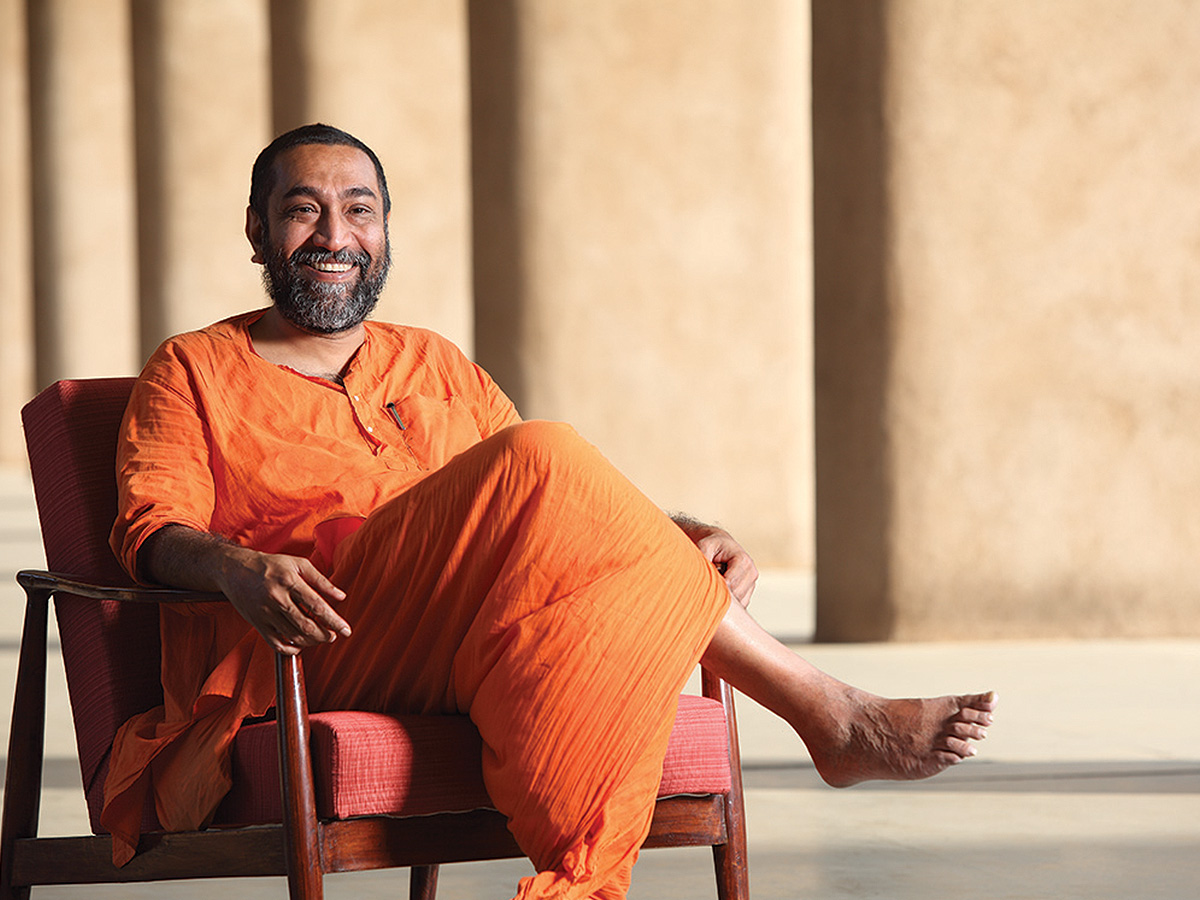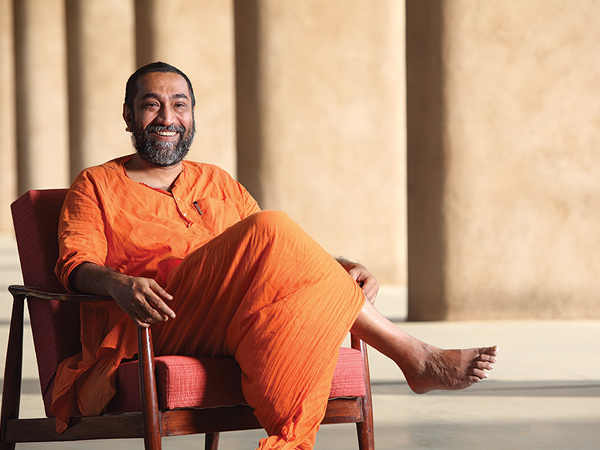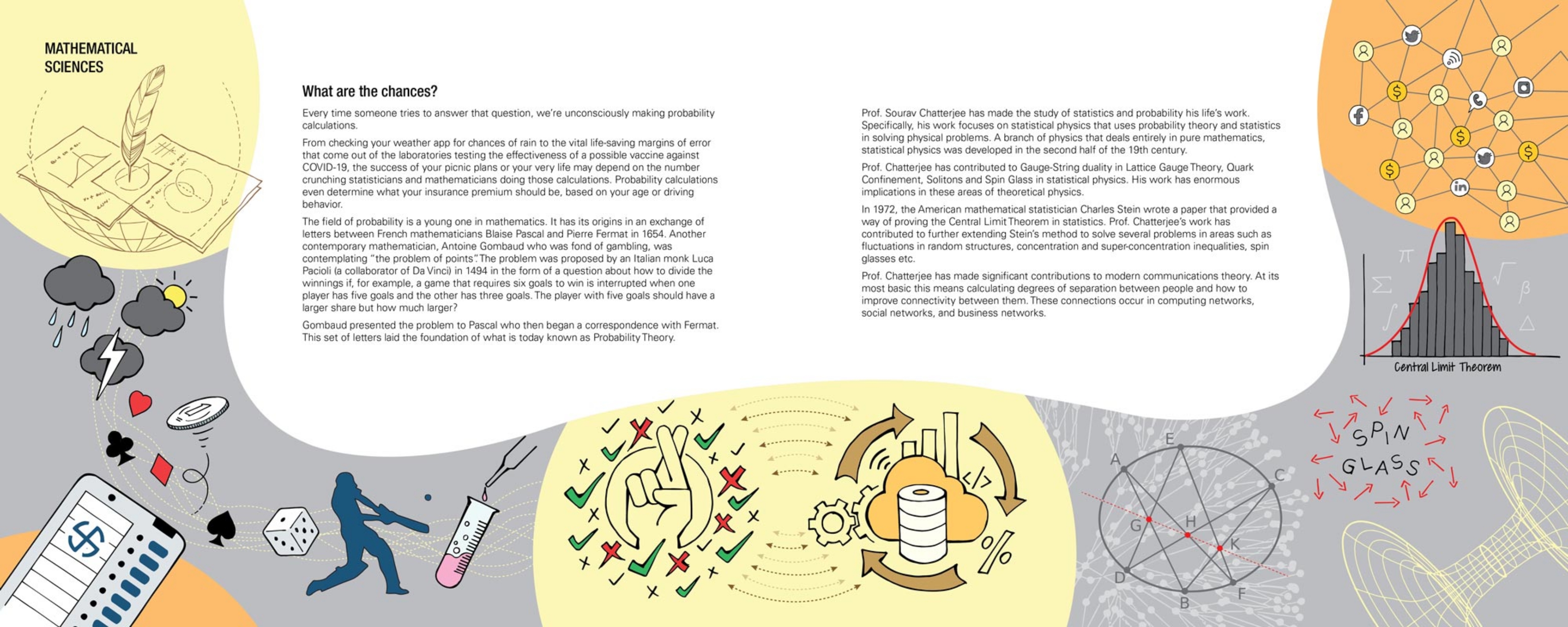The Infosys Prize 2015 in Mathematical Sciences is awarded to Prof. Mahan Mj for his outstanding contributions to geometric group theory, low-dimensional topology and complex geometry. In particular, Mahan established a central conjecture in the Thurston program to study hyperbolic 3-manifolds and introduced important new tools to study fundamental groups of complex manifolds.
Infographic:
Uncovering Structures Beyond the Observable Universe
Scope and Impact of Work
Prof. Mahan has made a substantial impact in the fields of geometric group theory, low-dimensional topology and complex geometry. His work in all these fields is characterized by its creativity and clever use of delicate geometric arguments.
In the 1970’s, Thurston introduced a far-reaching program to study hyperbolic 3-manifolds which complemented his approach to his Geometrization Conjecture. In the last decade, tremendous progress has been made on Thurston’s original program and most of his conjectural picture has now been verified. One highlight of this success was Mahan’s proof that every Kleinian surface group admits a Cannon-Thurston map. This result has already had many applications within the study of hyperbolic manifolds and Mahan and his co-authors have generalized the techniques involved to apply to much more general situations arising in geometric group theory.
More recently, Mahan has expanded his research program to the study of complex geometry. His work has clarified which groups can arise as fundamental groups of various classes of complex manifolds. For example, in collaboration with Biswas, he characterized exactly which one-relator groups arise as fundamental groups of Kahler manifolds.
Bio
Prof. Mahan Mj was born Mahan Mitra in 1968 and went to St. Xavier’s Collegiate School in Kolkata. He went to IIT-Kanpur, initially to major in Electrical Engineering, but switched later to mathematics. He graduated with a Masters degree in 1992. He received his Ph.D. from the University of California, Berkeley in 1997. His thesis was called Maps on Boundaries of Hyperbolic Metric Spaces. After a few months at the Institute of Mathematical Sciences, Chennai, he joined the Ramakrishna Mission in 1998 and received his saffron robe and became a monk in 2008. He received the Shanti Swarup Bhatnagar award in 2011.
Timeline
Jury Citation
Prof. Mahan Mj’s most prominent result is a proof of Thurston’s conjecture that every Kleinian surface group admits aCannon-Thurston map. A Kleinian surface group is a properly discontinuous action of the fundamental group of a closed surface on hyperbolic 3-space by isometries. A Cannon-Thurston map is a continuous equivariant map from the boundary of the surface group into the boundary of hyperbolic 3-space. In many cases, the Cannon-Thurston map will be a sphere-filling curve. As a consequence, Mahan Mj proves that if the limit set of a finitely generated Kleinian group is connected, then it is locally connected. This result has already had many applications in the study of hyperbolic 3-manifolds and Mahan and his co-authors have studied Cannon-Thurston maps in more general geometric group theoretic settings. The jury was also impressed by Mahan’s varied work on pattern rigidity and fundamental groups of complex manifolds.
"Mahan’s work is an important milestone in Thurston’s program, started almost forty years ago, of classifying and understanding the possible shapes of low dimensional spaces using the group of symmetries that they have as a tool".




